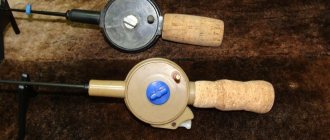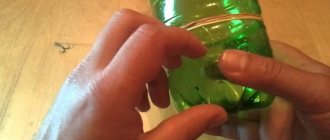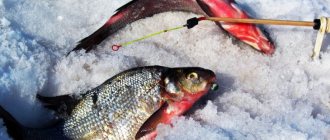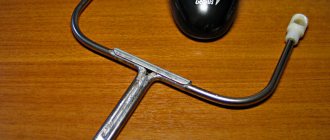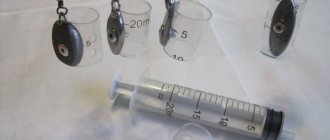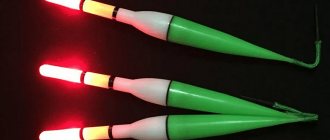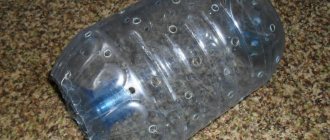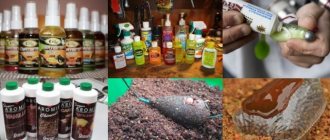At first, fish were caught using a special trap, and only then other fishing gear began to appear. But some fisherman no - no, and will use this ancient, but quite effective method of fishing. Now the main purpose of the trap is to help catch fry. The fact is that after landing on a hook as an active bait for predatory fish, the fry will not live long, ceases to be active and is of little interest to predators - the fisherman’s main prey. Using a trap, you can prepare significantly more live bait for predatory fish and increase the results of catching large specimens several times.
DIY fish trap.
The trap must be made in such a way that if it falls into it, the baitfish cannot escape back. To make a trap, you can use various unnecessary trash. Although this is unfortunate, now on the shore of any body of water you can easily find a storage area for plastic bottles and use it to make a trap.
You will also need twine, wire and fishing line. An excellent solution would be to use a bottle of lean unrefined oil - there is no need to rinse it, since the smell of the oil is already a good bait for fish.
1. At a third of the height of the bottle, the neck is separated and inserted with the neck inside the bottle. Both parts of the bottle are fastened together with wire at three to four points. To quickly plunge our product into the abyss of water, we make many small holes. We put a crust of bread, potato peelings, a weight inside and tie a cord or twine. We throw the trap into the pond and fasten the cord to the shore with the words: “Catch a big fish and even bigger ones.”
2. A mesh with a cell size no larger than 1 cm is stretched over the prepared frame.
3. For this type of trap, you can use a metal mesh.
Two funnels are made from the same mesh.
The funnels need to be secured on both sides of the box. The narrow ends of the funnels should face the inside of the box. The most optimal bait (cake, potato peelings) is placed in the trap.
The prepared mesh box can be immersed in a pond
usamodelkina.ru
Live bait
When starting a story about live bait fishing, it is impossible not to give a brief description of the live baits themselves. Moreover, it is appropriate here to mention not only the taste preferences of pike, another predator, but also such characteristics as the survival rate and transportability of the fry.
- Crucian carp. To the taste of all predators, especially pike, the vitality is excellent. In suitable conditions, caught in the fall in November, it can survive the entire winter.
- Top melter. An excellent snack for perch and rotan; pike, especially small ones, will not disdain it. In terms of vitality, it is almost as good as crucian carp. Not suitable for river fishing due to fatigue. In spring it is in greatest demand, as the water warms up slowly and the predator rises to the warm upper layers, where the apex swimmer lives.
- Roach, rudd. Like other river fish, it does not live long in captivity. To increase shelf life and during transportation, it is worth using compact, autonomous battery-powered compressors.
- Perch. It practically does not survive in summer and autumn. It can be stored well only in winter in almost ice-cold water, but even then no more than two weeks. Pike and zander like striped sailors.
- Loach. An excellent live bait, one of the few used for trolling and live fishing. Vitality is not inferior to crucian carp. Pike, and other predators, grab the loach greedily, because of its fidgetiness on the hook. You can catch loach by equipping a donk with it.
- Gudgeon. Live bait, which is to the taste of any predator, but has no survivability. Excellent for catching pike while fishing in the current. You can also catch minnows from a boat.
- Rotan. The Far Eastern guest likes perch and pike. In summer it lives poorly, in winter it comes to life even after freezing and subsequent thawing.
- Ruff. Burbot's favorite delicacy. Even pike perch will not disdain them. The ruff has been used since November. During the period with warmer water, he quickly falls asleep.
- Bleak. This fish can be caught in spring, summer, and autumn using a float rod and a line from the shore or boat. For this pelagic fish, pike and perch rise from the bottom with great eagerness.
Harvesting live bait
Live bait is harvested in several ways depending on its species, place of catch and season. Basic fishing methods:
- On a float rod from the shore. It is not difficult for her to catch crucian carp, roach, gudgeon, rotan and perch. Basically, fishing takes place in the same body of water where the predator hunt is planned. A large number of fry are found only in shallow waters, where fish, such as crucian carp, degenerate. In the current, they use a fishing rod to catch the fry in the line. You can catch fry with a fishing rod throughout the open water season, ending by November. Donka is also used.
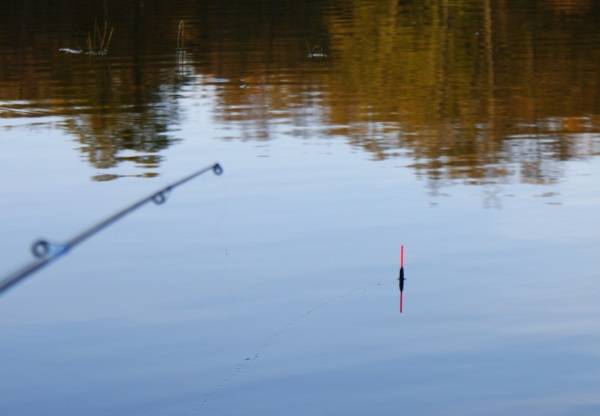
- On a float rod from a boat. It is used in river bays, in places overgrown with aquatic vegetation when it is impossible to approach a shallow place from the shore. Fishing objects: roach, rudd. Harvesting is carried out in spring or summer.
- Nets, muzzles, tops. They can be used for fishing in crucian carp ponds and river shallows. A variety of carp smalls fall into the net with bread bait. This mesh is bought in a store, but it is not difficult to make it at home with your own hands.
- Spider. Grid with a horizontal arrangement of the working part. Used for catching topwater and bleak. Sometimes small roaches swim into the spider, and you can also catch crucian carp. A dusty bait is placed in the spider lowered to the bottom of the reservoir, onto which the fry swims, then the net is quickly raised. The spider is great for catching fry in large quantities. In addition, they spit with it on a boat to the desired place in the reservoir. While sitting in a boat, lower the spider directly below you, without using a long pole. This fishing gear is not considered poaching if the size of the spider does not exceed one meter. It's no secret that making a spider with your own hands is not at all difficult.
- Metal nets and baskets. These devices are used to catch loaches in silted streams and small rivers. The basket scoops up the silt with the loaches hiding in it, then the silt is filtered.
- Winter fishing for bloodworms or non-mothfish. You can catch roach, perches, and ruffs. They begin fishing on the first ice in November.
Separately, we need to mention the unforgettable plastic bottle. Let's secretly say that it also makes an excellent trap for live bait. To make the tackle catchy, you need to do it like this:
- Cut off the top part of the bottle by about a third.
- We insert the cut off top, neck first, into the bottom of the bottle, having first unscrewed the cap.
- We fasten both parts of the bottle with wire.
- We make additional small holes for water.
- We tie a strong rope to the resulting structure.
Before throwing such a trap into the water, we put bait in it and weigh it down with something so that it does not float up, especially in the current. The fry easily penetrate the bottle through the neck, but not everyone succeeds in getting out through the reverse cone.
Now we need to talk about the time of harvesting live bait. If you are planning a fishing trip this coming weekend, then you should not prepare live bait for salting. After all, one of the main tasks of an angler when hunting a predator is how to keep the bait alive and mobile. Moreover, it is not worth just thoughtlessly destroying even any small, from the point of view of ordinary people, waste fish.
It’s another matter if the harvesting is carried out for the winter, and long-term storage of live bait is required. In this case, fishing for fry should begin during the autumn cooling, at the end of September or beginning of October. There is no need to postpone until November.
Firstly, in late autumn in November the predator’s feeding is already in full swing; live bait prepared in advance will come in handy. Secondly, in very cool water, the carp bite is less active, and it’s not comfortable to fish; it’s better to stay at home in such weather.
Device for catching fry
¹ 49617
AUTHOR'S CERTIFICATE FOR INVENTION
DESCRIPTION of a device for catching fry.
To the author's certificate of E. V. Kamensky, declared on January 25
1936 (reference about the first one No. 185238).
0 author's certificate issued on August 31, 1936.
And here's what you need to know: Using a bite activator for successful fishing
Subject of the invention.
When catching fish with a net, with girders and by means of descent, live bait is required (fry, top swimmers, etc.). Catching fish for bait is still done with ordinary nets, sieves or baskets.
When lowering nets and sieves into the water, fishermen usually put a load (stones, nuts, etc.) in them for quick sinking.
When pulling a tackle with a catch of fish out of the water, the latter are very often killed and stunned by the load in the tackle.
According to the invention, a net is proposed in which, in order to avoid the death of fish, the load is given the form of a ring with a mesh valve. )
The drawing shows the device in perspective form.
To the net 8, at the site of the knot, a weight is attached, made in the form of a ring with a valve made of light metal mesh 7; The caught fish, without using hands, are quickly unloaded into a bucket or tub of water by opening the mesh valve that closes the hole in the ring weight.
The device consists of four painted iron or brass rods 3, extending in the form of an umbrella, with a net 7 attached to the bowstrings.
The opening of the rods 3 is carried out by means of a hinged cross 4.
The rods are mounted on a swivel 2, suspended on a cord 1 to a pole.
1. A device for catching fry, made in the form of a net, characterized in that the weight placed in the lower part of the net is made in the form of a metal ring with a mesh valve, which serves for unloading the caught fry into storage.
2. The device according to claim 1, characterized in that the mesh. 7, the net is attached to rods 3, hingedly connected to the swivel 2 and connected to each other by a movable cross 4, in order to hold the net in the deployed position.
www.findpatent.ru
Storage
The section on storing live bait should be divided into two separate parts. Firstly, you need to know how to preserve live bait for a short time - an upcoming fishing trip, for example. The second part is a description of long-term storage.
As noted above, live bait is not stored for long in the summer. Even to preserve fairly tenacious crucian carp and loach, special conditions are needed. It’s good if the fisherman has a house in the village - he lives in the countryside, in a country village or in a country house. There you can install a large barrel, dig a small pond, or come up with another storage method.
In the home conditions of a city apartment in the summer, even crucian carp will not live more than a week. An aquarium compressor and frequent changes of water help prolong the life of the fry. However, if the water supply is chlorinated, there is a problem with replacing it.
In winter, you need to stress less about how to preserve live bait. This is quite simple to do: a container insulated with foam plastic is installed on a closed balcony. An additional heater will protect the water from freezing, and the compressor will aerate it.
Do-it-yourself folding baby doll
On the topic pages, the operations of making folding do-it-yourself dolls for fishing are discussed in detail.
In the first way, anyone can make a hatchling with a folding frame, however, suitable for fishing only in the summer.
Folding devices made with your own hands using the second and third methods are, to one degree or another, suitable for catching small fish, both in winter and during summer fishing.
All three designs of homemade little ones are easy to make with your own hands. At home, they can be made from waste or non-scarce materials.
And, nevertheless, homemade folding fishing devices are effective means of catching fry. The small fish with a large opening of the net also contains good live bait, suitable for loading baits - girders for catching pike, pike perch and other predatory fish in the summer.
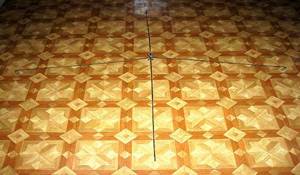
The assembly of the largest doll in area and quite simple to manufacture consists of a wire folding frame, the components of which can be bent with your own hands, with a minimum of tools. The unfolded frame is shown in the photograph.
Somehow it happened in life that the frames of my homemade little fishes first ended up, and then firmly established themselves in the category of consumable fishing devices, which they lost, drowned, and gave “for a while” to other fishermen to use.
Over the more than forty years of my fishing practice, some hand-made fishing devices and tackles, including folding fishnets, have been sold out and no one knows who now has them.
For this reason, I have acquired considerable experience in making various fishing devices (and not only small fish) with my own hands, which I want to share with other fishermen to the point of tears.
Moreover, they had to bend the rays for homemade malyavochniks in the plural - for themselves and their friends - literally almost on their knees.
For those who want to make a folding hatchet with their own hands in a more civilized way, below are explanatory drawings, drawings and a photograph of the frame of my latest homemade folding hatchet, which lingered in my fishing farm for a suspiciously long time.
For this reason, the steel beams of the folding device, often used for summer fishing, even had time to noticeably rust.
Transportation
Delivery of live bait for fishing is also associated with a number of difficulties. If a pond with a predator is within walking distance, then live bait can be brought in an ordinary bucket. If live bait for fishing is caught in the same body of water where the predator is to be hunted, then it can be stored in a fine-mesh cage lowered into the water. This method is especially suitable for fishing from a boat.
A bucket is not suitable for delivery by car; you need a special container - a can for live bait. It must ensure the safety of live bait: protect the water from splashing and, if possible, maintain the optimal water temperature for the time of year.
Although live bait cans can be bought at any self-respecting fishing store, many fishermen try to make them at home with their own hands. They are made from plastic cans or foam, old pots or cans, and other suitable materials. Winter containers are additionally insulated with foam rubber, foil insulation or polystyrene foam.
In spring and summer, the live bait can is additionally equipped with a compressor, which runs from a car cigarette lighter or from a battery.
If you need to transport or store a large amount of live bait in a pond, plastic barrels with a volume of 50-60 liters are perfect. To transport live bait, the barrel must be equipped with one or even two aerators.
At the fishing site, we replace the lid of the barrel with a net or gauze, which can be secured with an elastic band or rope, and place a weight on the bottom of the barrel. Gauze or mesh is needed to renew the water and keep the bait longer. We tie a rope to the barrel so that it is convenient to lift it later and immerse it in the water. In winter, through a specially made ice hole. In summer, it is better to immerse the barrel under water in a shady place, and attach the rope to a driven stake.
Equipment and bait
Now let's consider the question of how to attach live bait correctly, what gear and methods to use. There are three types of bait hooks:
- single;
- doubles;
- tees.
The choice of one hook or another is determined primarily by the type of fry and the method of hooking it, and the choice of gear. Single hooks are designed for hooking even the smallest fish. The weight of live bait, bleak or top-fin, is small, so these fry are placed mainly through the nostril, and predators swallow them quite deeply, so the use of doubles or tees is not justified here. It should be added that bleak is a very delicate live bait, rough handling is unacceptable and leads to the death of the fish.
Doubles are used when baiting live bait through the gills. In this equipment, the main role is played by the openness of this type of hooks. With this method of equipment, you should do the following:
- remove the double from the leash;
- pass the loop of the leash through the mouth of the baitfish and bring it out through the gills;
- insert a double into the loop of the leash so that its stings fit the fry’s head from below.
When baited with live bait through the gills, you can fish with confidence; this mounting method is the least likely to injure the fish.
Tees are used in rigs for large live baits when they are placed in the middle of the back. It is good to use them when using spiny fry - perch or ruff. Their natural prickliness masks the sharp stings of the treble hooks and allows you to catch pike without fear that it will spit out the bait.
There is a nuance in planting a loach. It's not that easy to do this correctly. The loach is slippery, fidgety, and quite difficult to hold. You should hold the loach behind your head with your fingers, like a snake, and quickly pierce it with a tee hook in the middle of the back. At the same time, the famous loach squeak is heard.
lovlyavsem.ru
At first, fish were caught using a special trap, and only then other fishing gear began to appear. But some fisherman no - no, and will use this ancient, but quite effective method of fishing. Now the main purpose of the trap is to help catch fry. The fact is that after landing on a hook as an active bait for predatory fish, the fry will not live long, ceases to be active and is of little interest to predators - the fisherman’s main prey.
Using a trap, you can prepare significantly more live bait for predatory fish and increase the results of catching large specimens several times.
DIY fish trap. The trap must be made in such a way that if it falls into it, the baitfish cannot escape back. To make a trap, you can use various unnecessary trash. Although this is unfortunate, now on the shore of any body of water you can easily find a storage area for plastic bottles and use it to make a trap.
You will also need twine, wire and fishing line. An excellent solution would be to use a bottle of lean unrefined oil - there is no need to rinse it, since the smell of the oil is already a good bait for fish.
1. At a third of the height of the bottle, the neck is separated and inserted with the neck inside the bottle. Both parts of the bottle are fastened together with wire at three to four points. To quickly plunge our product into the abyss of water, we make many small holes. We put a crust of bread, potato peelings, a weight inside and tie a cord or twine. We throw the trap into the pond and fasten the cord to the shore with the words: “Catch a big fish and even bigger ones.”
2. A mesh with a cell size no larger than 1 cm is stretched over the prepared frame.
3. For this type of trap, you can use a metal mesh.
Two funnels are made from the same mesh.
The funnels need to be secured on both sides of the box. The narrow ends of the funnels should face the inside of the box. The most optimal bait (cake, potato peelings) is placed in the trap.
The prepared mesh box can be immersed in a pond
handf.mirtesen.ru
Homemade trap for catching live bait in the water column
Dmitrij 10-09-2015, 21:52 11 676 Fishing / Traps
OK
It happens that you come fishing and nothing bites, but you often watch how a perch or other predator chases the fry along the top. This is where the question arises, where to get live bait, because it is quite problematic to take a spider with you every time. So one fisherman came up with the idea of how to make a compact trap for catching fry from scrap materials. For these purposes you will need a minimum of materials; all of them can be found at home without any problems.
Video on how to make a bottle trap with your own hands
The main feature of such a trap is that it does not sink to the bottom, but floats in the water column. With this approach, you can catch much more fry, since they are concentrated in the upper layers. In addition, the trap can be adjusted in depth. The author used ordinary plastic bottles as the main material.
Materials and tools:
- two plastic bottles (the larger they are, the larger the trap will be); - scissors; - an awl or a large needle; - a piece of foam; - any metal object for the sinker; - scissors and a knife; - rope and two carabiners.
Manufacturing process
Step one. Manufacturing of blanks
The blanks will be created from plastic bottles. Take the first bottle and cut off its neck, that is, the narrow part. Next you need to cut the bottle at the widest part. You can see exactly how in the photo. After this, take the second bottle and cut it at the widest part. As a result, you will get two elements, this is part of the bottle in the form of a watering can and part in the form of a vase or cylinder. The main point here is that the part of the bottle in the form of a watering can fits tightly into the second part of the bottle. As a result, an almost finished trap comes out. Step two. Loading the trap The weight is necessary so that the trap can be immersed without problems when lowered into the water, since the plastic itself is practically weightless in water. The weight should be small; it can be almost any object. For these purposes, the author turned to the child and he found him a wheel on a metal bracket, which was used as a sinker. You can use bolts, nuts, lead, etc. Step three. Creation of floats and complete assembly of tackle Floats are needed so that the tackle does not sink to the bottom, but is located in the water column. Foam can be used as floats. To do this, holes are made in two pieces of foam plastic and a rope is inserted. Bottle caps can be used as a stopper. You need to make holes in them, insert a rope, and then form knots. The length of the ropes is selected depending on the depth at which the fry need to be caught. In this case, their length must be strictly the same, so the trap will be in a horizontal position. The other ends of the ropes are attached to the trap. For these purposes, you need to make several holes in the bottle and install wire loops. The loops should be on the opposite side of the side where the sinker is installed. At the final stage, the main rope is tied to the load of the trap or any other place, by which the trap will be removed.
How the trap works
First, you need to put a piece of bread or flour in the trap. Then this entire system is sent into the reservoir. This can be done not only from a boat, but also from a steep bank, a bridge, or even simply by throwing a trap into the water from the shore. The whitebait begins to gather around the bottle at the smell of the bait and gets inside through a narrow hole. After this, it becomes difficult for the fish to find a way out of the bottle. After some time, the trap is pulled out of the water by the rope, and the fisherman receives live bait to catch the predator. In order for the fry to be removed, you need to remove the insert part from the bottle. Now the fry can be removed and moved to a larger container where it can live longer.
In this simple way you can always catch live bait. Source
OK
To write a comment you must log in to the site via social media. networks (or register): Regular registration
Information
Visitors in the Guests group cannot leave comments on this post.
usamodelkina.ru
Classification
Before catching live bait, you should decide in advance what you are counting on in the end and, based on this, choose your preferred varieties. This bait may have different characteristics such as: survival and compactness.
The most popular fry of such individuals are:
- Crucian carp. They are almost universal and all fish bite on them, but pike are especially fond of this delicacy. If the trap for live bait was placed correctly, and its maintenance is possible under suitable conditions, then, having been caught at the end of November, the crucian carp can serve you all winter.
- Top swimmers. They are mostly preferred by perch and rotan, but pike can also be caught with such live bait, although large specimens may disdain such bait. They are very tenacious, but get tired quickly, so calm waters are the best choice. The best time of year for fishing with such bait will be spring, because most predators after spawning swim up to the warm upper layers to profit from small fish.
- Rudds. It has very poor vitality, like any river fish, but this is corrected by compact and autonomous compressors with built-in batteries. Both perches and pike love rudd; for most other predators, this is not a very tasty prey.
When you have decided what species you will use for bait, it’s time to catch, but how to do it and what mistakes can inexperienced fishermen make?
Methods of capture
The choice of method depends on many factors, but first of all, on the type of fish and the season in which you plan to prepare live bait.
How to catch fry for live bait:
- Catching with a float rod near the shore. This is the oldest, most reliable and still ineffective way of catching live bait. Roach, crucian carp and even gudgeon and perch can easily fall into your hands, and it is best to fish in the same reservoirs where you plan to hunt predators in the future. Most of the fry are in small reservoirs, and they appear a couple of months after spawning, but it is worth familiarizing yourself with the legislation of your region in advance to avoid problems. When there is a strong current, it is best to catch fry with a wire, and you can start from the “opening of waters” season until November, in order to prepare your bait for winter fishing in advance. It is convenient to use donks for this purpose, which significantly speed up and facilitate the entire process.
- Fishing with a float rod is a little different when you swim far from the shore. Often, this is a necessary measure, because some bays and river fishing areas become overgrown with large amounts of greenery and algae over the summer, making fishing from the shore impossible. But how does catching live bait happen in this case? This kind of live bait fishing can bring you a catch in the form of roach or rudd, but it is best to start it in the spring or August. Since the boat allows you to swim to great depths, it is often more convenient to use nets, muzzles or tops.
- Using nets and other devices to catch live bait in the summer. In addition to rivers with rapid currents, the net is convenient to use both on river shallows and in calm reservoirs, where you can set it and forget it for a few days, and then return for bait. This method allows, with minimal effort, but considerable time expenditure, to obtain the largest number of preparations for catching a predator. If you pour even ordinary bread bait into the net, a large amount of small carp will swim into it. You can buy ready-made gear of this type at a fishing store, or make it at home yourself. Of course, this method is far from catching live bait on a bottle in terms of overall efficiency, but it allows you to cast a net and go about your business for several days, forgetting about it altogether.
- Using a spider (a net with a horizontally positioned working part) will allow you to catch high-flying fish and bleak. Sometimes, among other catches, there are also fry of roach and crucian carp, but this is the exception rather than the rule. Spiders are suitable for preparing a large amount of bait, because like a net, you just need to pour a little bread into it, but you can get it out soon, because the fry is caught very quickly.
- Using a bottle. The method is reminiscent of a classic mosquito trap - the top of the bottle is cut off and glued, neck down, to the rest. A little bait and weights are poured inside, and the fish that came to eat can no longer get out of there. All that remains is to pick up the caught perch from the bottom half an hour after laying it.
If the caught perch is kept in poor conditions, then it will hardly be able to survive even a few days before your next outing.
orybalke.com
Fishing with a bottle from the shore
Making bottle tackle for shore fishing is quite easy. You need to firmly tie the bottle with a rope, it will serve as a connection to the shore.
«>
Next, you should wind 5 to 9 m of fishing line around the bottle. The sinker must be tied to the edge of the base. A metal leash should be tied over the load.
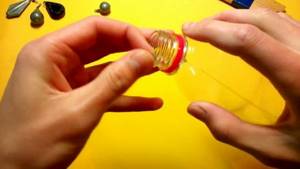
The bottle makes it possible to throw about 4 tackles to different places. They can be tied to a bush or tree and left for a certain amount of time. If you do everything correctly, the catch will please you.
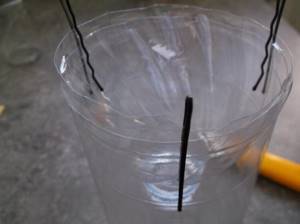
Baby net
Malyavochnitsa is the simplest trap design. This is a frame made of metal wire with a diameter of up to two millimeters with a stretched fine mesh. The structure is tied with a cord to a massive stick. Operating such a trap will not be difficult. To do this, bait (bread, porridge) is placed at the bottom of the trap, and the structure smoothly sinks to the bottom in the places where the fry live. When there is a sufficient accumulation of small fish above the trap, the structure is raised. The caught fry is transferred to a bait storage container and the process is repeated.
Do-it-yourself painter
And another trap for the fry
